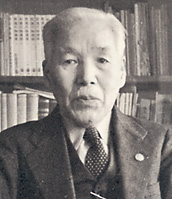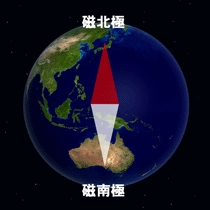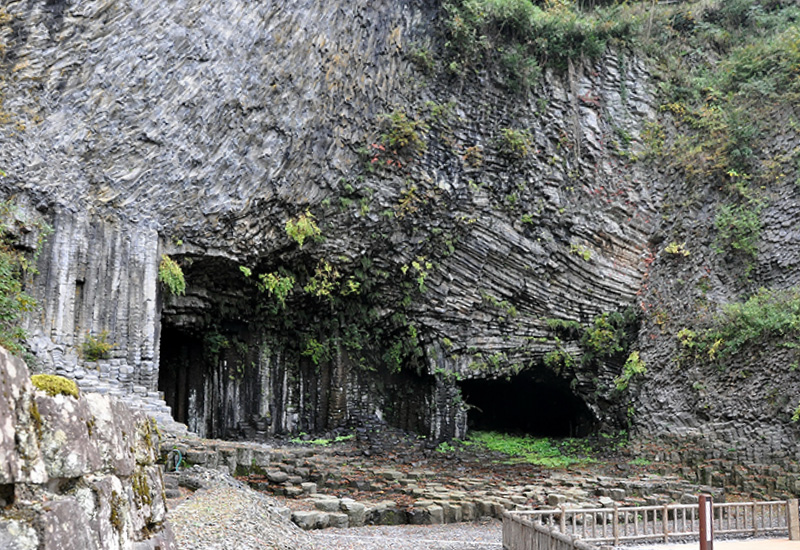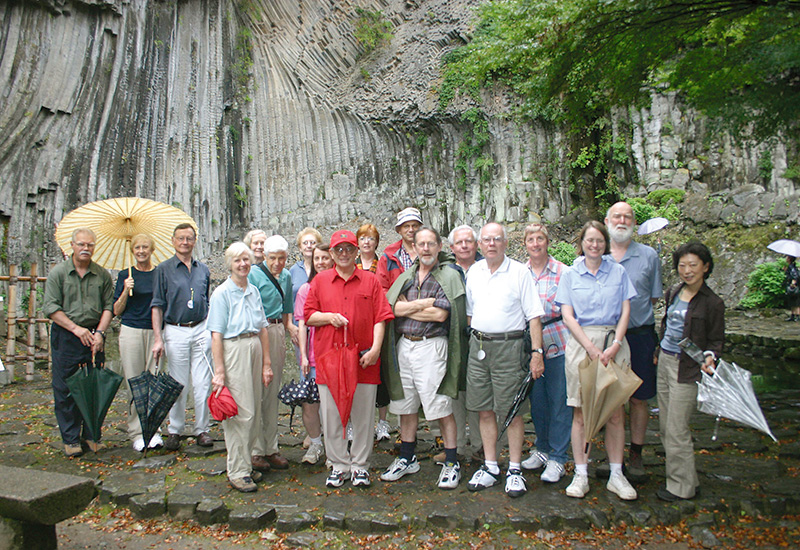International Geological Significance
Genbudo Cave is the place that led to the discovery of the period of reversal of the earth's magnetic field in the early Quaternary.
Based on the study of the basalt sample collected at "Genbudo" in Toyooka City, Hyogo Prefecture, it was discovered that there was a time when the earth's magnetic field was reversed for the first time in the world. In 1926, Dr. Matuyama of Kyoto University discovered that the basalt lava erupted from volcano about 1.6 million years ago was magnetized in the opposite direction of the current earth's magnetic field.
This discovery indicated that there was a period in which the earth’s magnetic field was opposite to what it is today. This period is called “Matuyama reversed chron” (dated about 2.6 million to 0.77 million years ago), and the discovery of the reversed period of geomagnetic field has greatly contributed to the development of the theory of the plate tectonics.
 Dr. Motonori Matuyama
Dr. Motonori Matuyama

In the first half of the Quaternary, the direction of the earth's magnetic field was opposite.
In June 2009, an international agreement was made to recognize the Matuyama reversed epoch (Matuyama chron) as indicating the beginning of the Quaternary era. The periods from about 770,000 years ago, the end of the reverse magnetic period, to the present, the earth's magnetic field is the same as it is now. But during that period, the geological age from about 770,000 to 130,000 years ago was ,further, named as "Chibanian". In this way, the change in the direction of the earth's magnetic field is also used as one of the indicators that determine the boundary of the geological age.

The Genbudo Cave (basalt) was formed by volcanic eruption about 1.6 million years ago.

The Genbudo cave receives many visitors from abroad.
